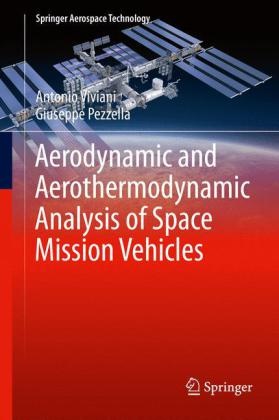Read more
Presenting an up-to-date view on the most important space vehicle configurations, this book contains detailed analyses for several different type of space mission profiles while considering important factors such as aerodynamic loads, aerodynamic heating, vehicle stability and landing characteristics. With that in mind, the authors provide a detailed overview on different state-of-the-art themes of hypersonic aerodynamics and aerothermodynamics, and consider different space vehicle shapes useful for different space mission objectives. These include:
· Crew Return Vehicle (CRV)
· Crew Exploration Vehicle (CEV)
· Sample Return Vehicle (SRV)
· Flying Test Bed (FTB).
Throughout Aerodynamic and Aerothermodynamic Analysis of Space Mission Vehicles many examples are given, with detailed computations and results for the aerodynamics and aerothermodynamics of all such configurations. Moreover, a final chapter on future launchers is provided and an Appendix on a possible manned mission to Mars closes the book. This work can be used as a reference for modelling and design techniques, for students intending to enter aerospace industrial careers, and to support both academics and engineers working in the field of space vehicle design.
This book has been awarded the Basic Science Book award 2016 by the International Academy of Astronautics (IAA), presented during the 67th International Astronautical Congress (IAC2016) held in September 2016 in Guadalajara, Mexico.
List of contents
Basics of Hypersonic Aerodynamics and Aerothermodynamics.- Fundamentals of Atmospheric Entry Dynamics.- Some Preliminary Considerations on Entry Vehicle Design.- Analysis of an Apollo-shaped Crew Return Vehicle.- Lifting-body Vehicles.- Winged Re-Entry Vehicles.- Analysis of Sample Return Capsules.- Launchers: Present and Future.- Appendices.
About the author
Antonio Viviani is full professor and chair of Fluid Dynamics at the Second University of Naples. He is a specialized scientist in the field of Microgravity: he has been principal investigator of several experimental campaigns performed onboard the Space Shuttle such as the IML2 and LMS Space Fluid Science Experiments. He is currently involved in thermo-chemical modeling of high enthalpy non-equilibrium flows past re-entry vehicles. Giuseppe Pezzella has been research scientist at Italian Aerospace Research Centre (CIRA) since 2005, after a period spent at the University of Naples "Federico II" in the frame of post-doc activities. At CIRA he is currently involved in re-entry vehicle design activities, in particular in the frame of ESA (FLPP-IXV) and National (PRO.R.A. USV) programs. He is a specialized analyst in the fields of vehicles' configuration design, aerodynamics and aerothermodynamics.

